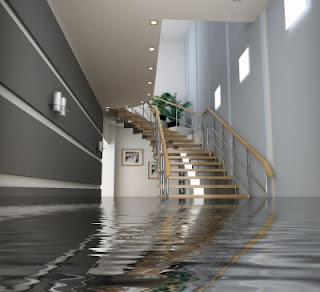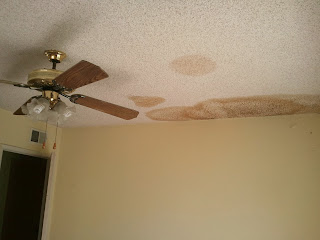Water is one of the most amazing materials on the planet, and it has thousands of tremendous benefits. However, when water invades our home and or businesses, it can become a nightmare for any homeowner and/or business owner. An unfortunate event like flooding in your home or business can create a host of endless problems that can be extremely difficult to handle. The property damage that may come as a result of a flood can be devastating.
A mold inspection can help set you on the right path to recovery.
In addition to property damage, we also need to be concerned with other threats that may challenge our quality of life. One of those threats you should consider after your home has been flooded with water is the possibility of mold.
Mold can give most people an uneasy feeling because it is usually associated with negative consequences. Once your home has been infiltrated with water, choosing a dedicated professional to conduct mold testing in your home is a necessity. Here are five good reasons why you need to have your home tested for mold as soon as possible.
A Mold Inspection Can Give You Important Information
Did you know that a professional mold company can perform mold tests and mold inspections after a flood? The results can be very enlightening to help you determine the next course of action to get your home back to normal.
Mold can pose a serious threat to your family’s health, so understanding the proper way to treat it is important.
You may be asking yourself why do you need a mold testing and inspection company when you could just go straight to a company to remove the mold.
There are several reasons to have a mold inspection, and mold testing, performed before you even consider calling a mold removal and remediation company. To determine areas that may be affected, potential cross contamination, once you know what you could potentially be exposed to you can take it to your doctor to determine how it may affect you.
Mold Can Do Serious Damage To Your Health
Mold can literally be found anywhere, and it can be abundant in a warm, moist environment. This is why your home is extremely susceptible to mold after a flood occurs. If you have severe flooding, mold can spread quite quickly and be an immediate danger to your family.
Mold shouldn’t be taken lightly because it can wreak havoc on your health. Mold is sometimes difficult to identify, so you may be getting exposed without even realizing it.
A professional mold inspection should be completed as soon as possible if your home has experienced water damage.
Mold can be very Difficult To Get Rid Of
You have had the devastating impact of a flood, and you attempt to rebuild your life shortly afterwards. Many homeowners make the mistake of thinking that they are safe from mold formation after a flood because they don’t see it. This couldn’t be any further from the truth.
Mold can literally be found anywhere throughout our homes even in the tiniest places like air ducts. It may be weeks or even months for a property owner to realize that they have had mold present in the home. Realizing that your home is at risk quite quickly is important in preventing mold formation.
Once mold is in your home, it becomes extremely difficult to remove. One of the best ways to prevent a mold from taking over is to have a reputable company perform a mold test and full home mold inspection as soon as possible following a flood.
Identifying the smallest units of mold in the beginning stages can only be discovered with expert knowledge and equipment. Finding the problem early will save you financially in the long run.
A Mold Inspection Can Save Money
One of the major concerns that homeowners will have after a flood is getting assistance from their insurance company. This can truly be an overwhelming, stressful time for many people who may have lost everything that they own.
While many don’t want to add anything else to their plate after a flood, it is imperative that you get the mold testing done immediately.
Here’s why: the insurance. Did you know that many flood insurance policies won’t pay claims if you are making one weeks or months after an incident?
As mentioned earlier, it may take weeks or even months following a flood for a mold colony to appear visually in your home. If you didn’t use a professional mold company to test and inspect for mold from the beginning, you could be out of luck for making any type of insurance claim.
Mold can be difficult to spot, but it will also be more money out of your pocket if you wait until the problem gets worse.
Mold Will Destroy Your Home
Even if you don’t have catastrophic damage from the flooding in your home, mold can create further damage that can wreak havoc.
You have enough to be concerned about once your home has been damaged by water. The last thing you want to deal with is adding more money to your costs to rebuild your home. Putting off having your home tested and inspected for mold by a professional could cost you more money in damage repairs to your home.
Why You Need To Hire A Professional Company
Knowing how to handle mold is not the easiest task in the world. Mold can be dangerous, and it can create myriad different financial concerns if you don’t get it handled quickly.
A flood can truly be a stressful time for anyone, but we go the extra mile to answer all of your questions. Contact us today for superior mold inspections in your local area. We can arrive to your home or business quickly, and we will help you resolve the situation as quickly as possible.










